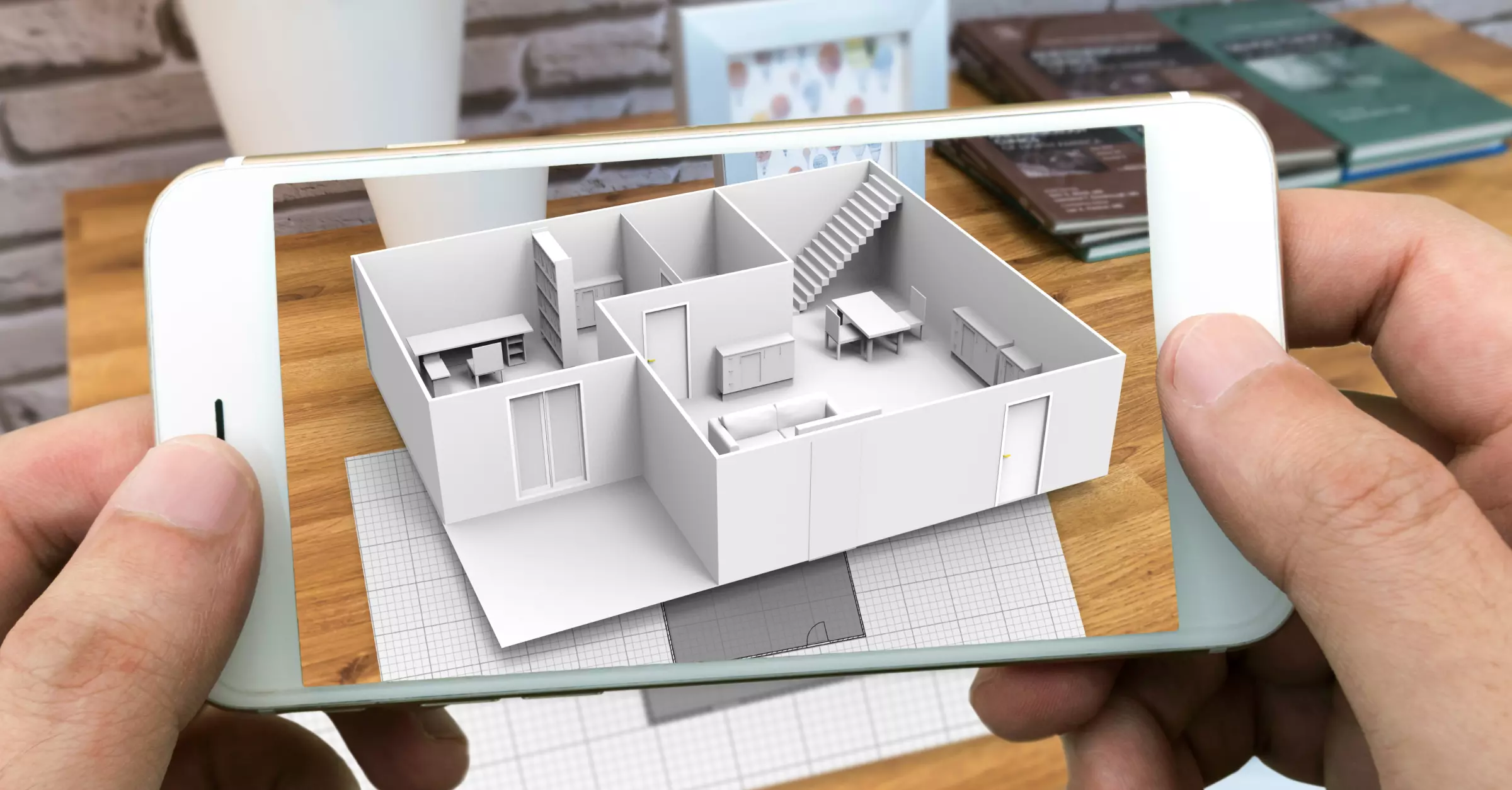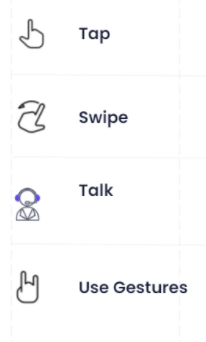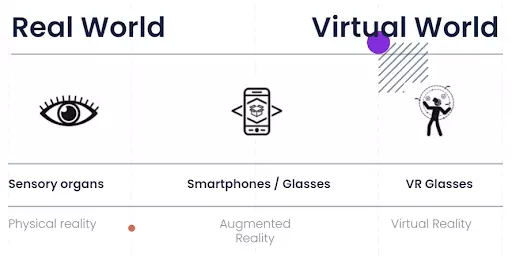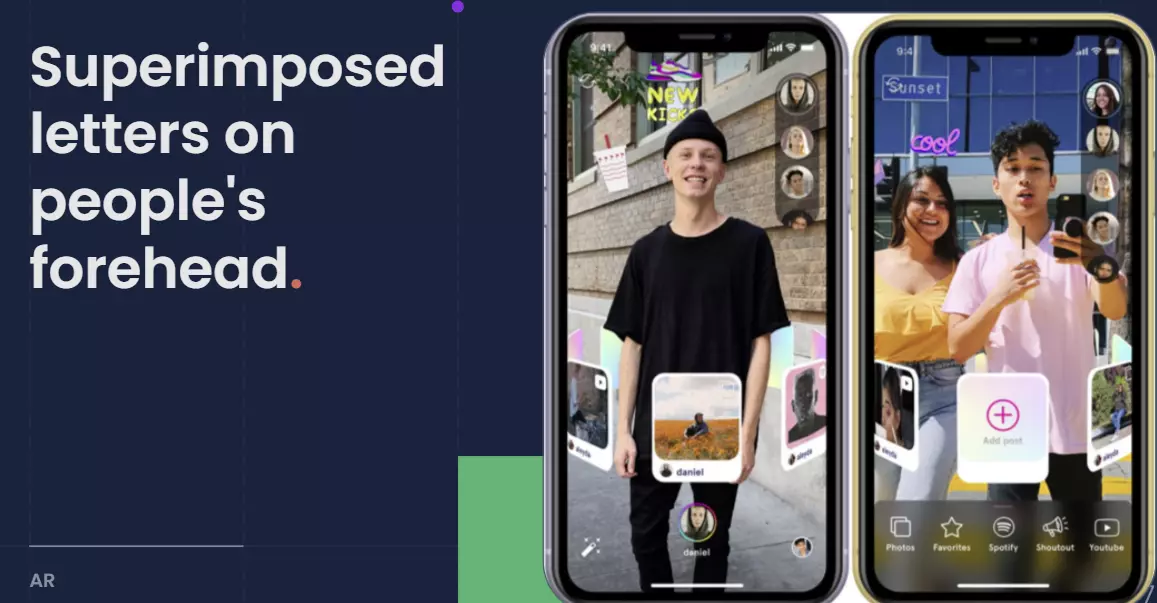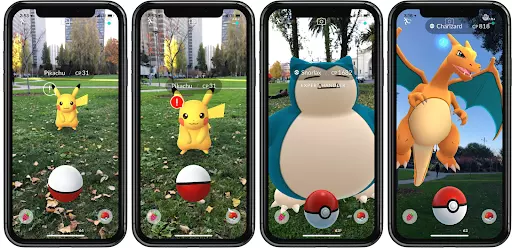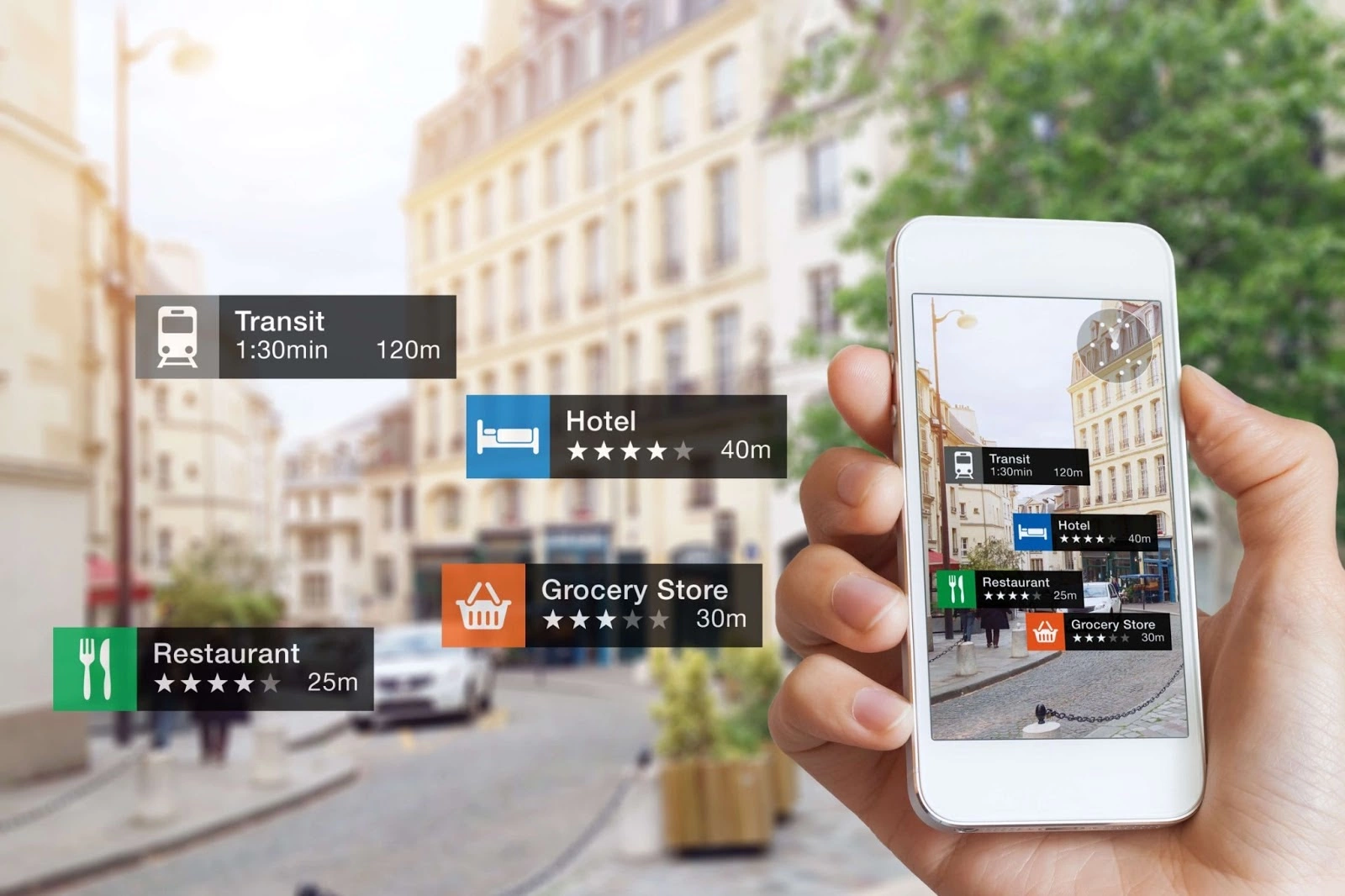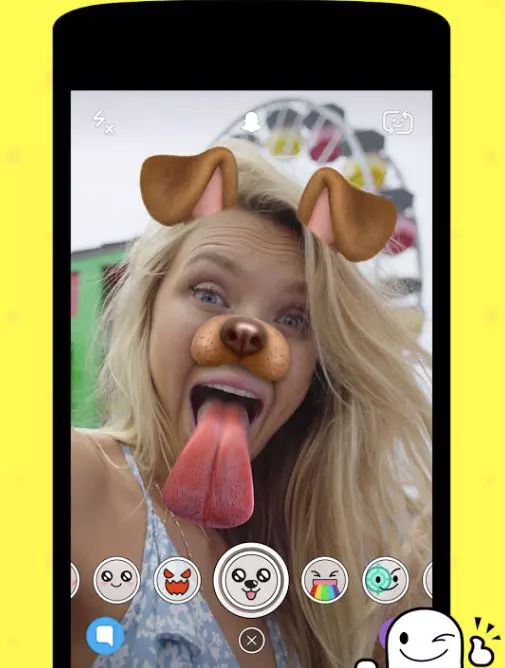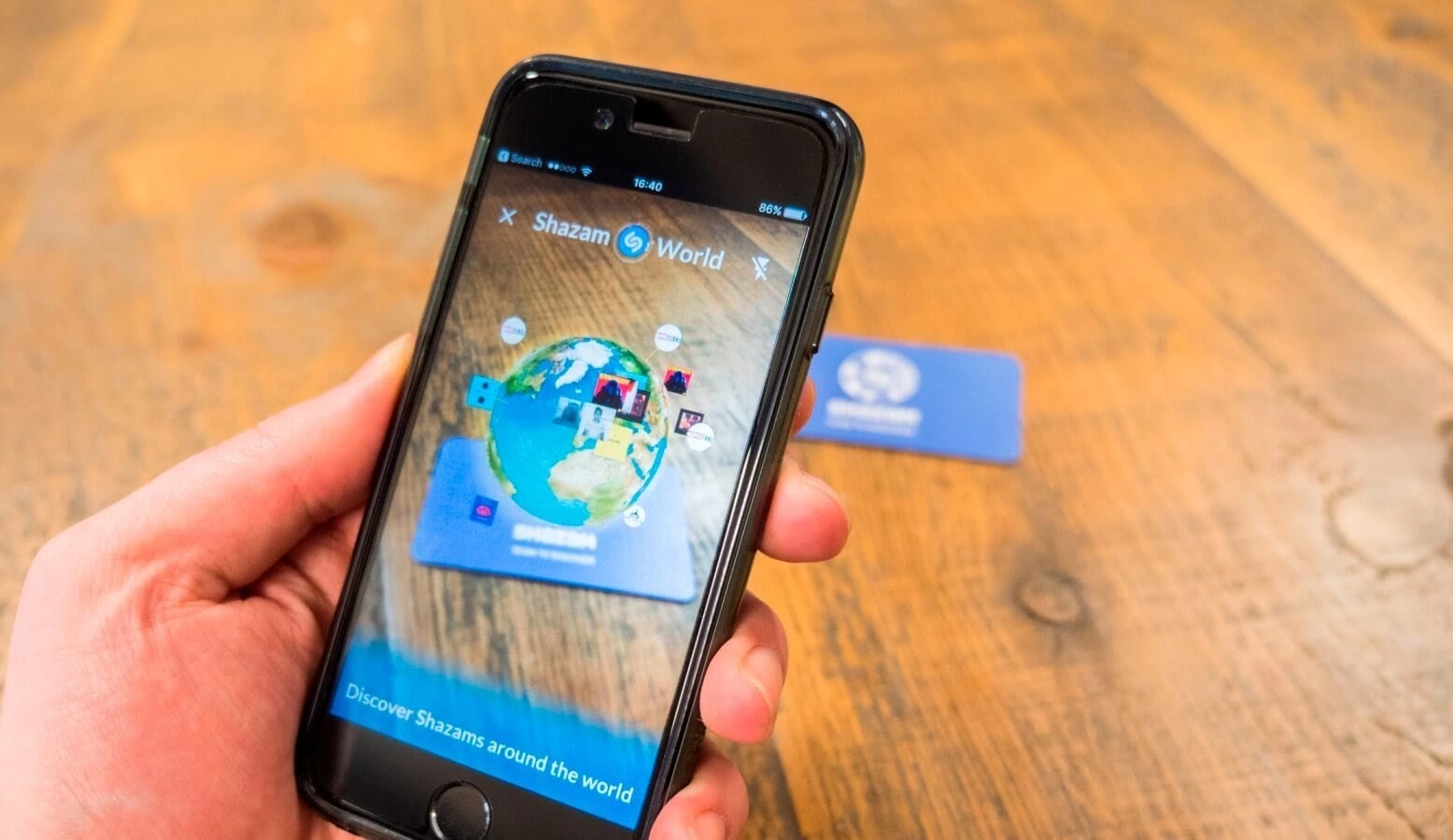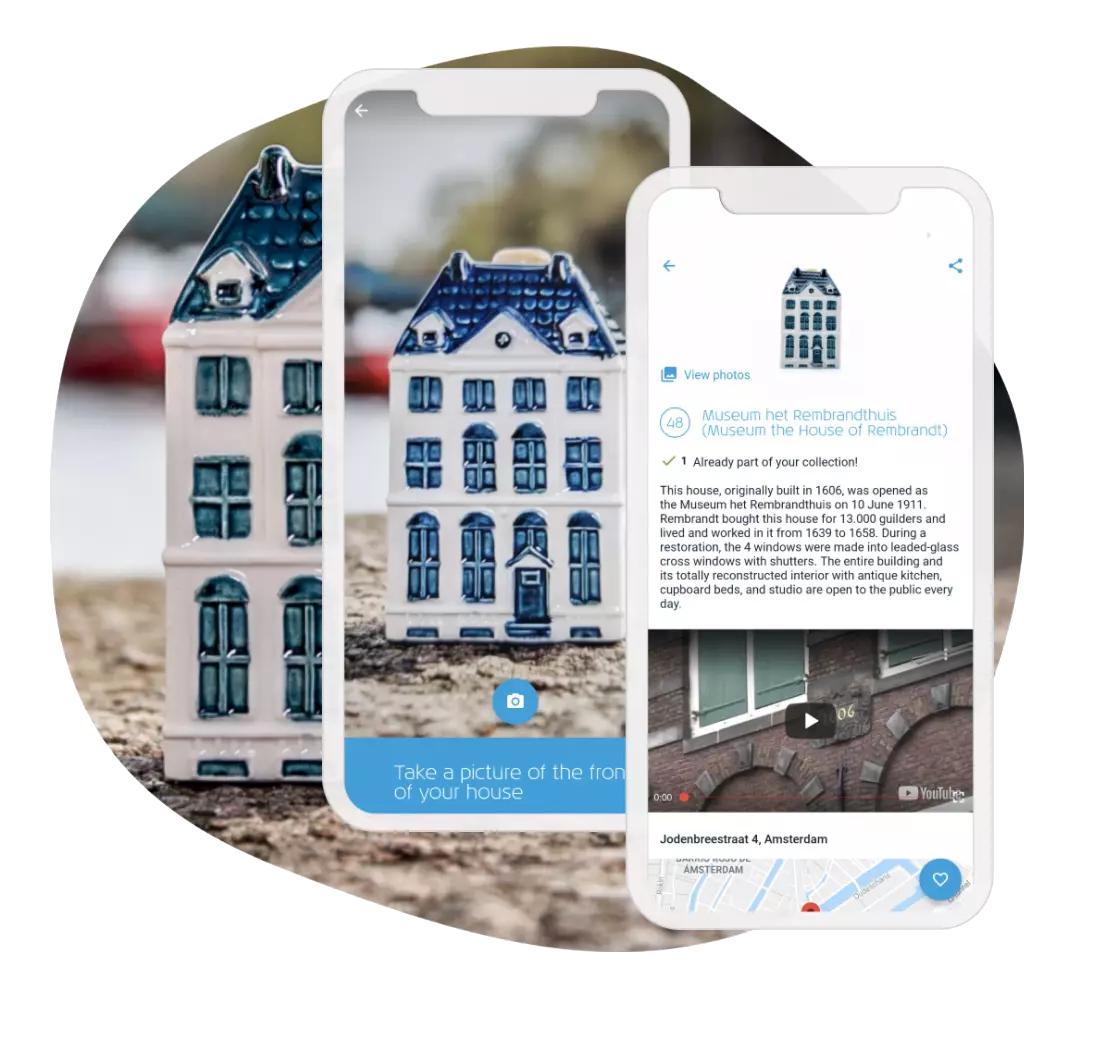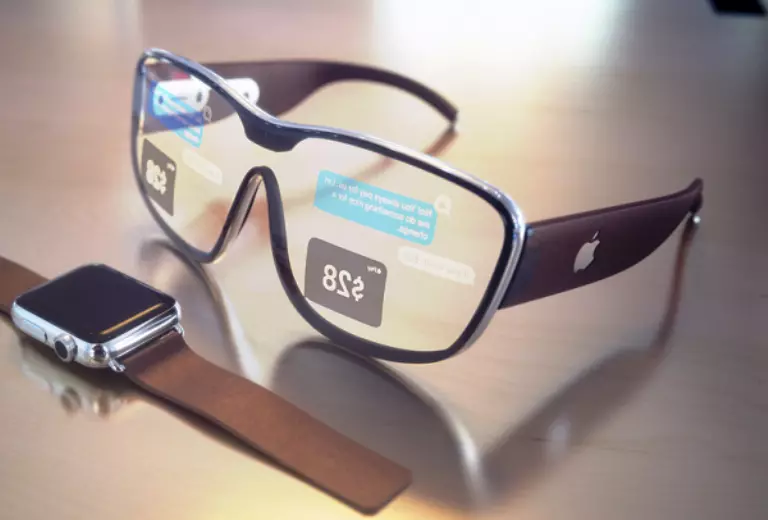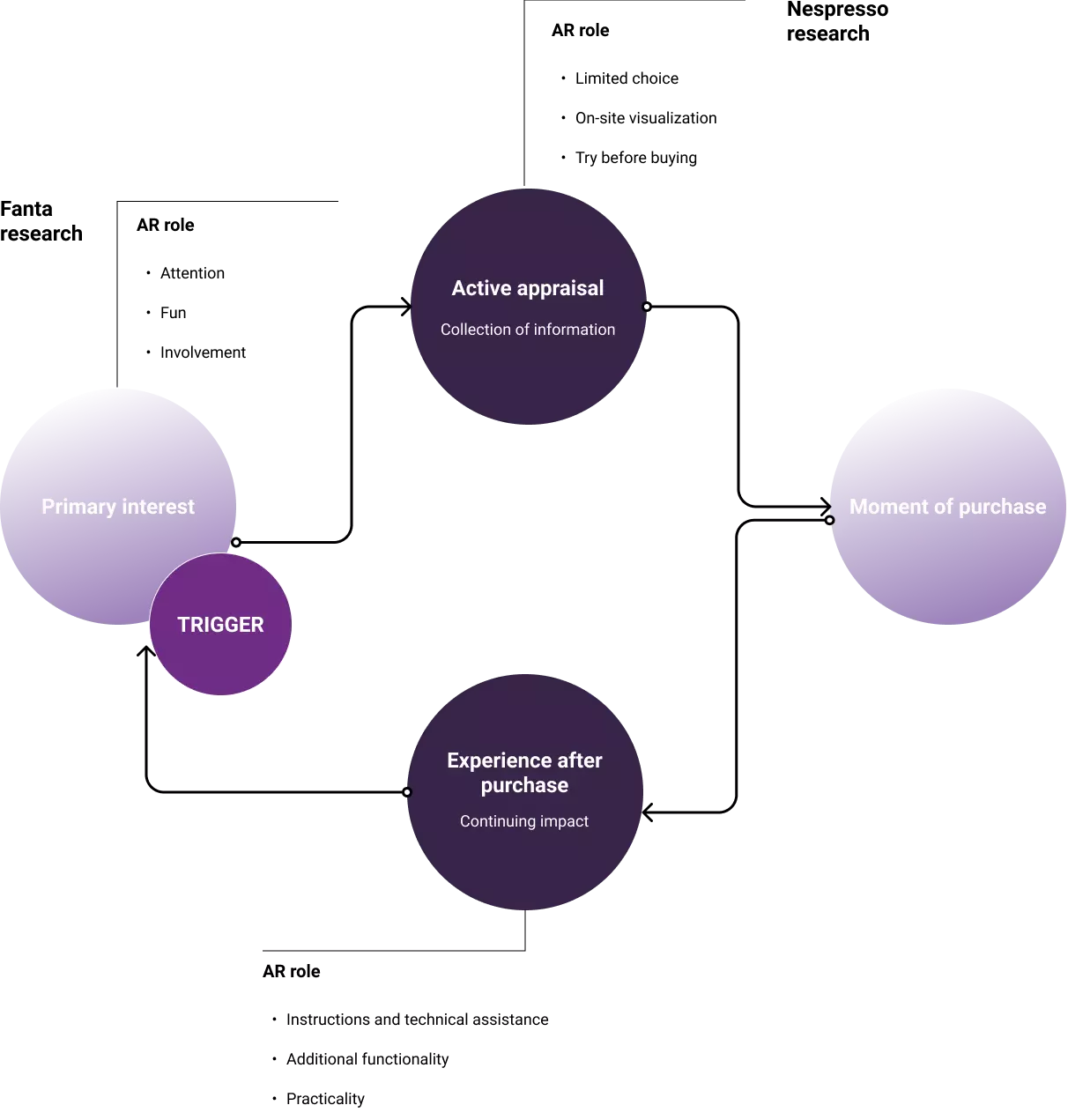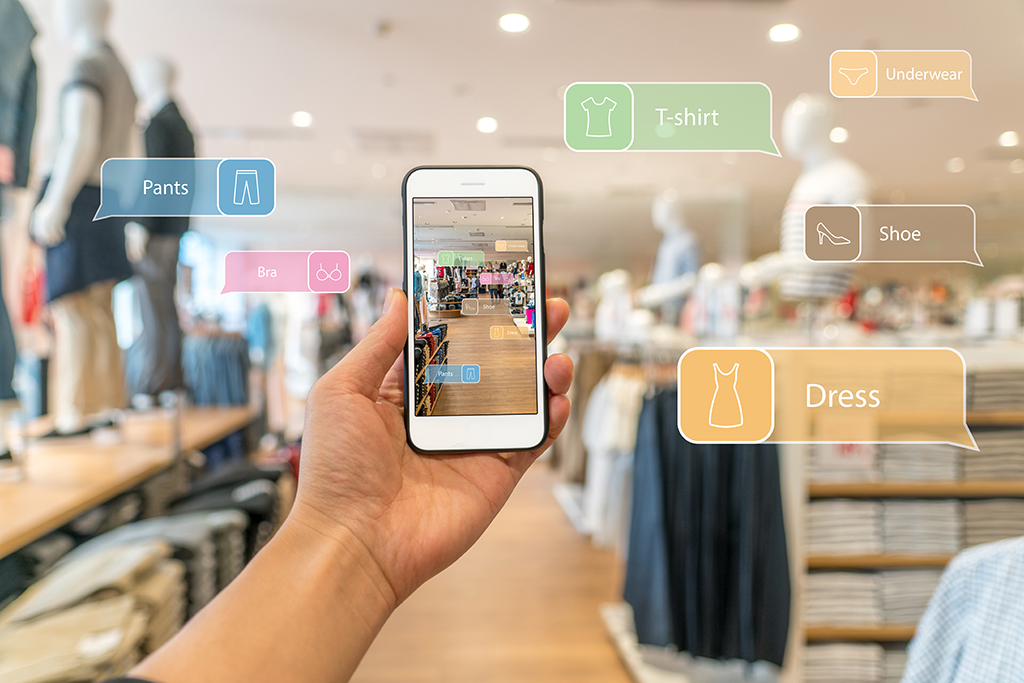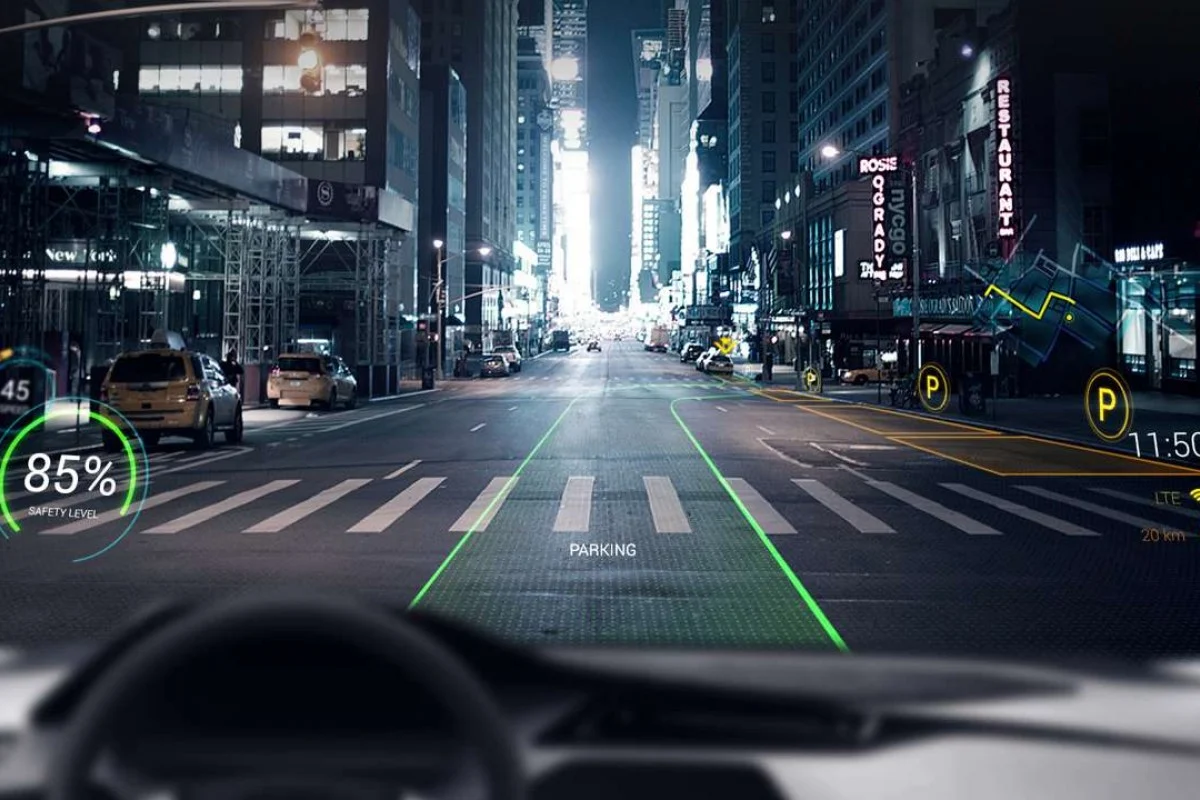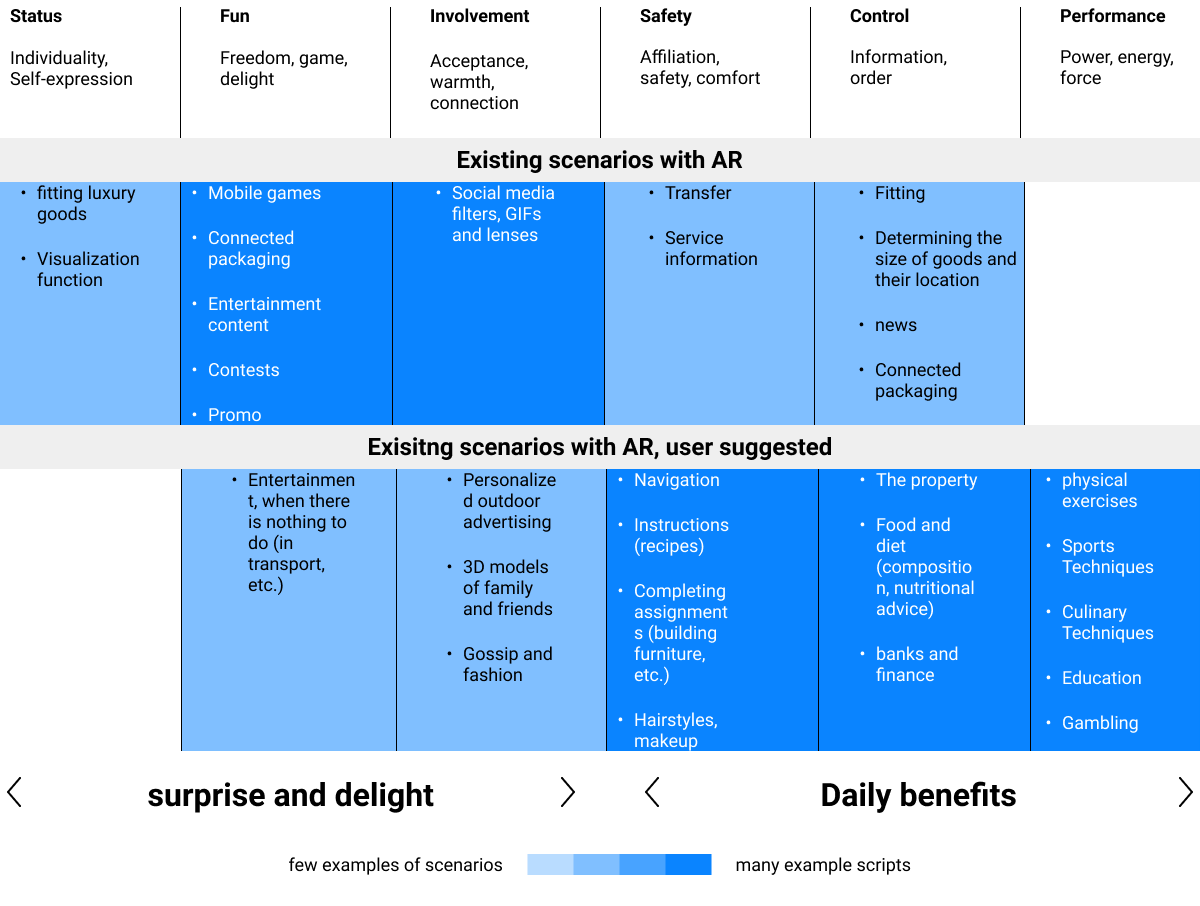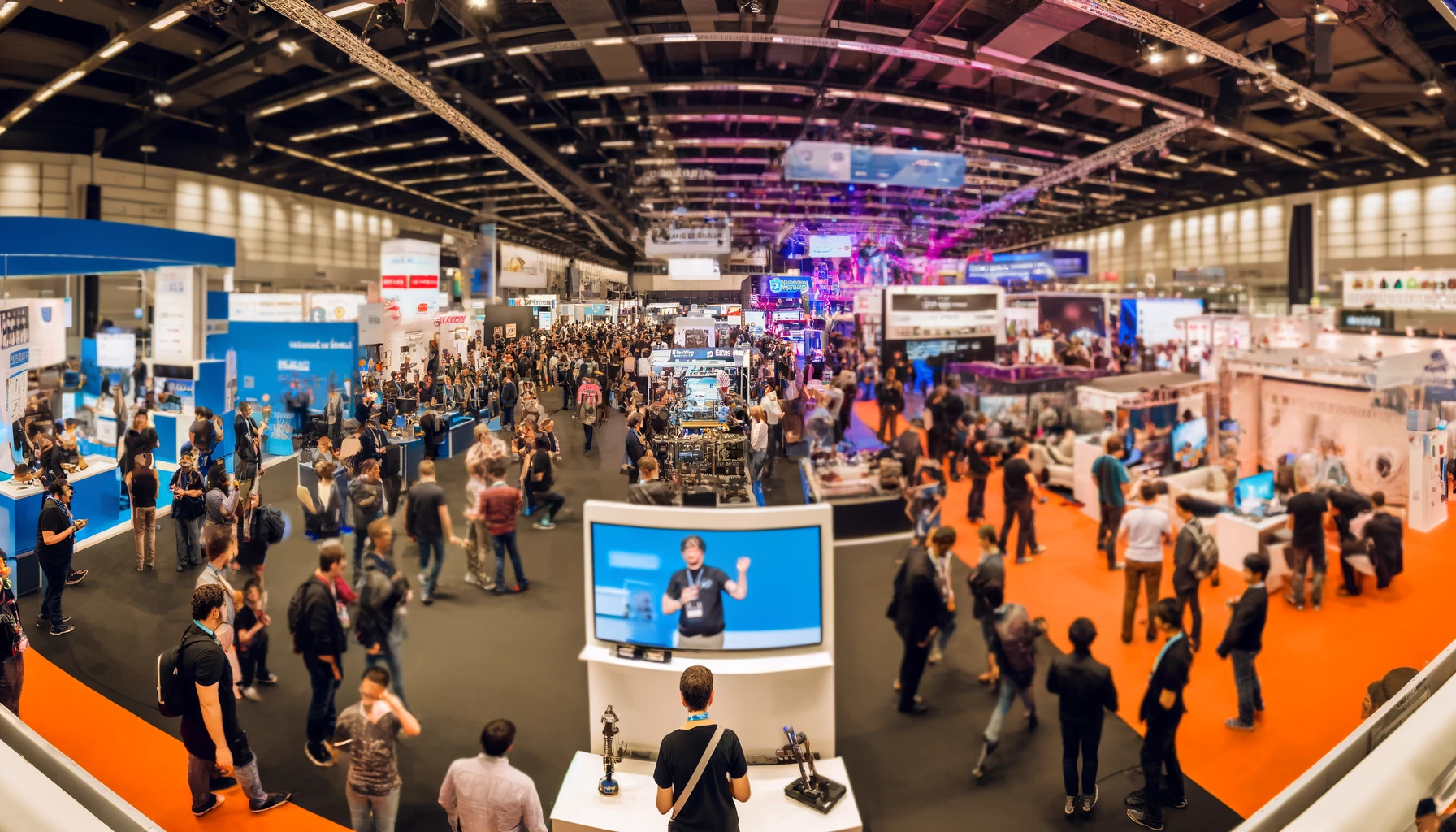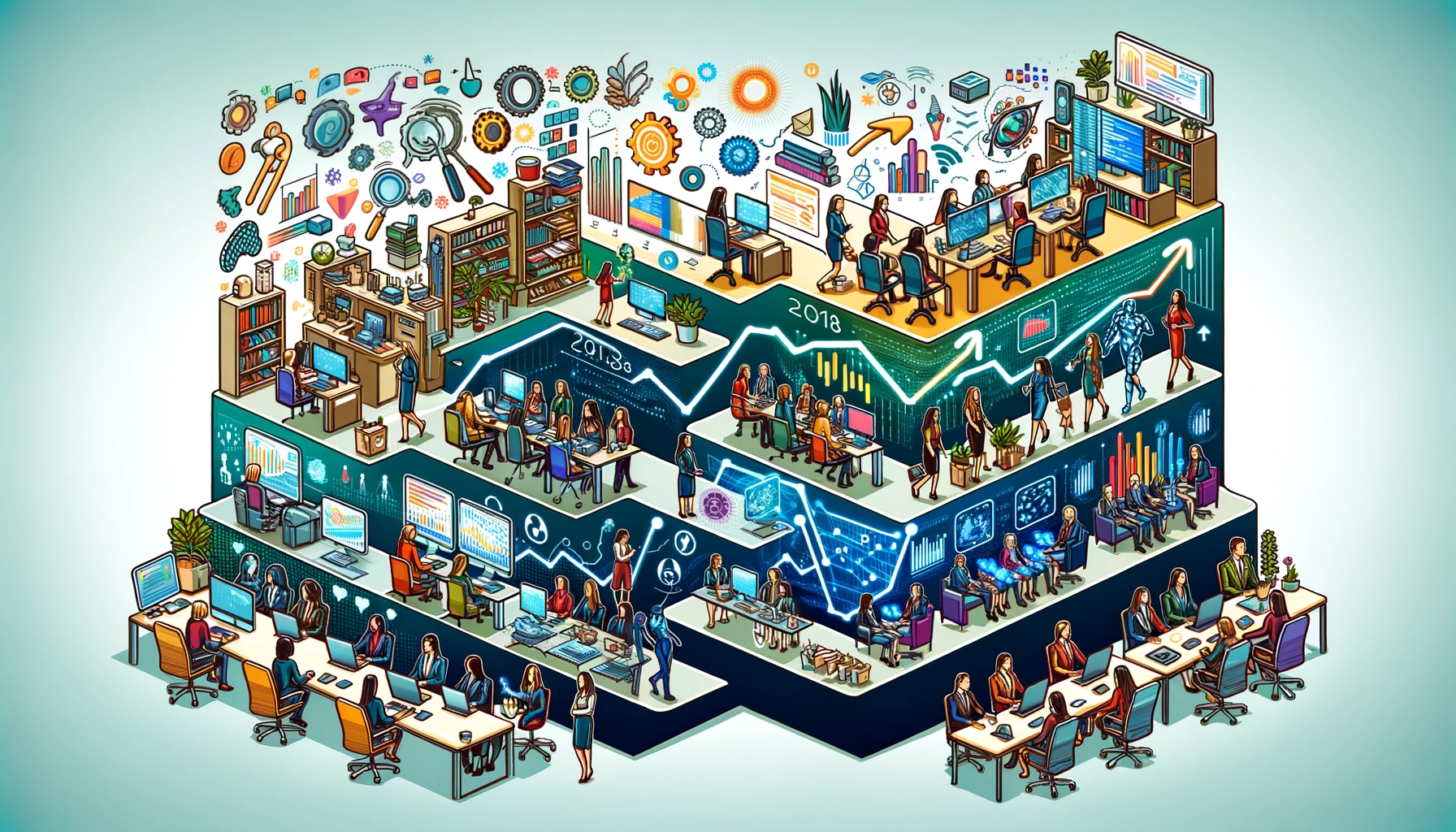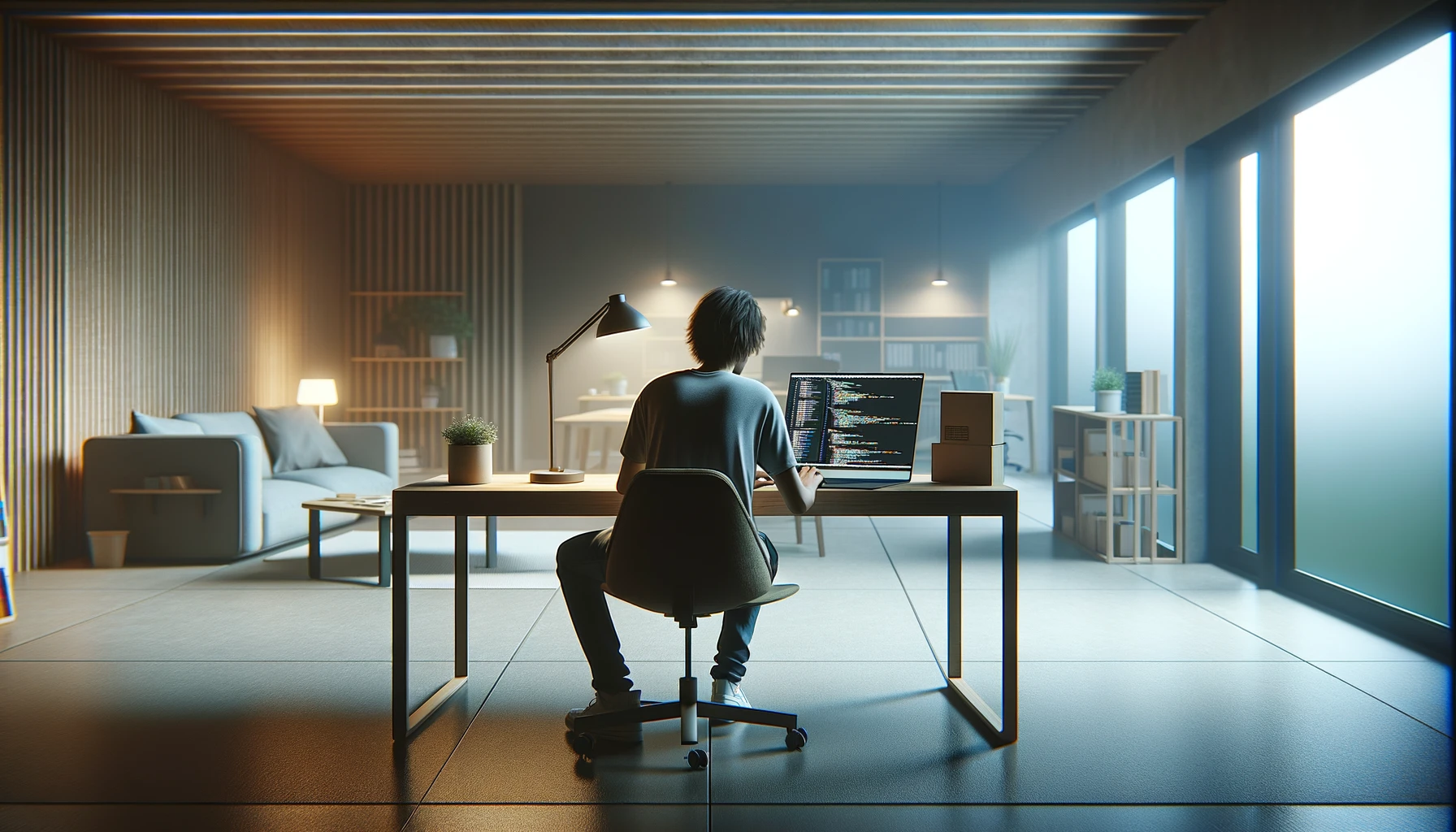
My name is Nick Popov and I’m a Lead UI/UX Designer. Here, I am going to talk about what’s going on currently in the augmented reality (AR) industry, where it all started and why it’s not yet where we’d like it to be.
What is AR?
We are entering a new era of immersive computing. For the past 30 years, we have been on a journey to simplify the way we interact with technology by breaking down the barriers between the real and virtual worlds. For many years, we have relied on proxy devices such as keyboard and mouse in our interactions with machines. The dawn of the era of smartphones has led to the emergence of smart screens that you can tap, swipe and with which (recently) you can talk and use gestures to interact with.
We are using sensory organs in combination with smartphones and glasses to perceive augmented reality.
A step further is the use of glasses with which we experience virtual reality.
The concept of augmented reality was first formulated back in 1901, when L. Frank Baum described in
his novel “The Master Key: An Electric Fairy Tale” augmented reality glasses (or “character markers”) that superimposed letters on people’s foreheads… In 1990, Thomas Caudell, a researcher at Boeing, coined the term “augmented reality”.
To quote Baum, “It consists of a pair of eyepieces. As long as you wear them, everyone you meet will be marked with a letter. That way, you can at a glance determine the true nature of everyone you come across.”
The way in which Baum imagined the world to become, we are now using this concept to build augmented reality.
The arrival of the smartphone in 2007 sparked a wave of experimentation, mostly focused on games, culminating in the global phenomenon of Pokémon Go in 2016. However, augmented reality has been slow to gain popularity compared to the wider smartphone explosion.
What the Augmented Reality Landscape Reveals
What’s in store for us?
Tech giants are gearing up for the next digital platform shift. Access to augmented reality solutions becomes easier every day as the technology is integrated into an increasing number of applications and platforms. People are ready and waiting for an additional layer of content that will improve their world.
Augmented Reality (AR) Examples
AR in social platforms
Image Recognition
Native branded apps
Augmented reality glasses
… and other devices.
A lot of research reveals that regardless of how quickly glasses evolve, augmented reality will play an increasingly important role in consumer behaviour, encouraging people to buy.
How popular and well understood is AR?
Despite the enthusiasm for augmented reality in the tech world, the term itself has relatively little prominence. Primary research among smartphone users in the UK shows that 51% of them know about the term (compared to 83% who know about VR), but only 25% can choose the correct definition from the list. Only 11% believe they have used augmented reality apps.
AR in the future
Where is AR headed? From surprise and delight to daily use
AR applications will evolve from a one-off fun to a multipurpose tool. Today, technology is largely used as a passing entertainment. This is reflected in two of the biggest manifestations of augmented reality: Snapchat’s dancing hot dog and Pokémon Go.
Layered Content & Daily Use
- AR showing you restaurants around the area as you move your phone camera down the street
- Automatic translation from a foreign language of any text detected by the camera
- Navigation service that provides the user with additional relevant information of a local nature
These are all examples of personalized contextual content without being triggered by the user.
Computer vision (with ML-based image recognition) will evolve to the point where phones and other devices with cameras will be able to visually identify almost any object.
There will be a new form factor for glasses, which will allow you to always track the environment to identify objects and, subsequently, overlay relevant content at the right time.
AR will become a key tool for helping people
Augmented reality will become a key tool for helping people, helping life simply flow, reducing everyday friction between a person and their environment.
However, there is untapped potential for using AR to meet broader needs.
Our qualitative study involved people who tested augmented reality apps in their environment for a week. After becoming accustomed to existing augmented reality uses, they began journaling to identify moments or events in their daily lives in which they felt that AR could be successfully applied to meet emerging needs.
Value for Brands
As a Lead UI/UX Designer, part of my job is to prove the value of AR for businesses. Neurobiological research has shown how powerful augmented reality experiences are for humans in terms of brand engagement and memory coding.
As the tools of technology evolve, its ability to deliver these exciting moments of “wonder and delight” will only grow stronger. Consider how you can use augmented reality to create an impressive brand experience that truly delights your consumers and stays in memory for a long time.
AR in Practice
Use Cases
I’d like to share with you some use cases, such as the one where I worked at a startup. We built an interface, a web editor where you can add augmented reality in any image. When you scan it, it shows you information about an object within the image and/or 3D models of your selection i.e. the object you interact with.
This provides great use for retail and brands, education, packaging, automotive, entertainment, real estate, healthcare and other industries. Below are some examples of how AR helps some of these industries to provide a more innovative, interactive and immersive experience for their users.
Retail and brands
- Create innovative, immersive digital AR content cost efficiently
- Scale digital AR content and engage consumers in a more innovative way
- Build AR experiences and publish multiple times across different platforms and channels without relying on technical skills
- Track the user engagement analytics to derive valuable insights for your business
Real Estate
- Implement Augmented Reality to drive higher sales and reach higher number of potential buyers for smarter buying decisions
- Enable potential buyers to experience a home through augmented reality immersive walkthrough and better filter out homes they like, saving agents time
- Create AR for various potential landscape and real estate layouts and let the customer decide on what best layout works for them
- Builders can show prospective buyers what the end product will be, adding a concrete level of tangibility and increasing the ability to pre-sell projects
More examples related to other industries can be found here.
Google is increasing its influence in the field of augmented reality through the growing popularity of its Lens app. PPC and SEO strategies built on the basis of this company’s visual search will play an increasingly important role. Google Lens technology usually displays relevant information about the scanned objects and provides a hotspot for searches on Google or YouTube.
Learn more about our Augmented Reality services here. Have an AR project you’d like to talk to us about? We’d like to help. Just book a consultation with us to get started.
